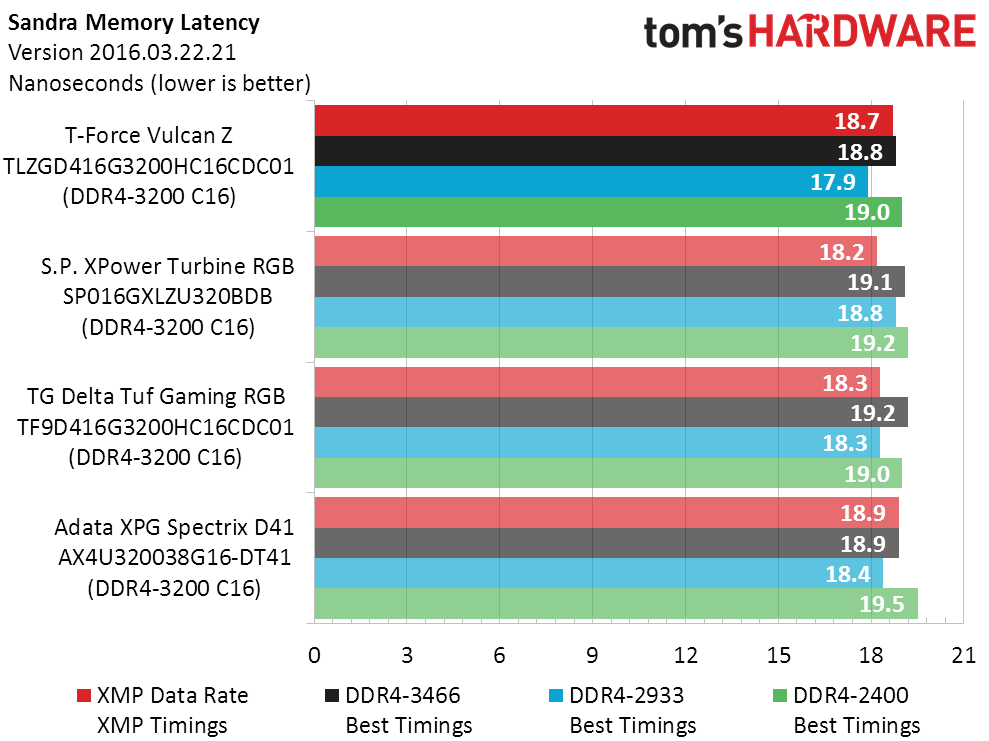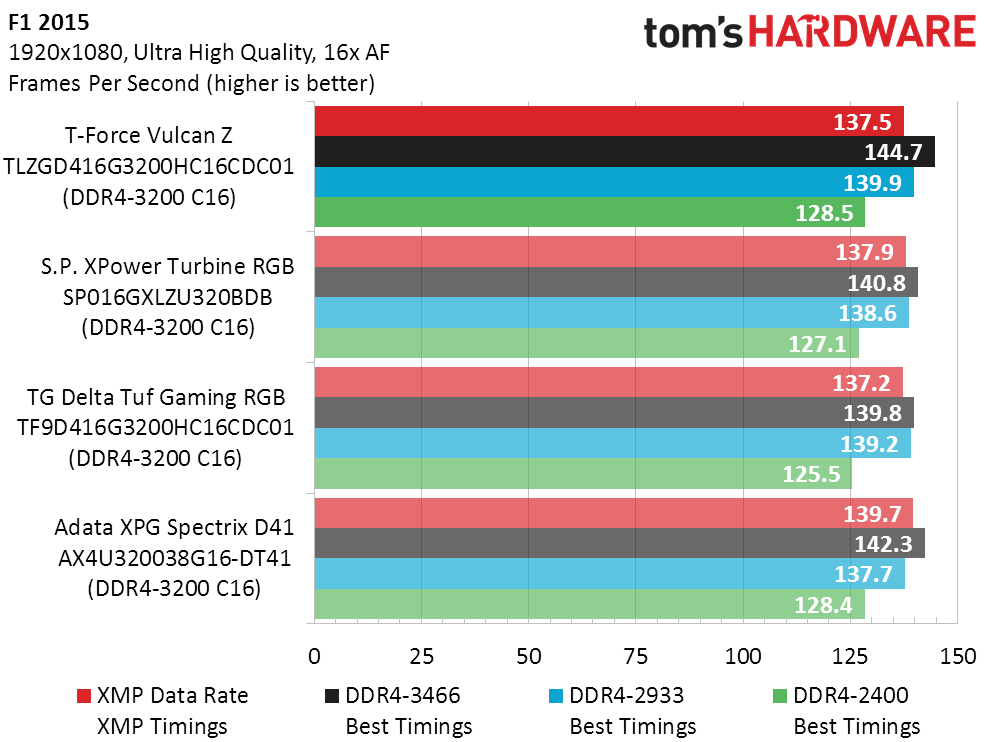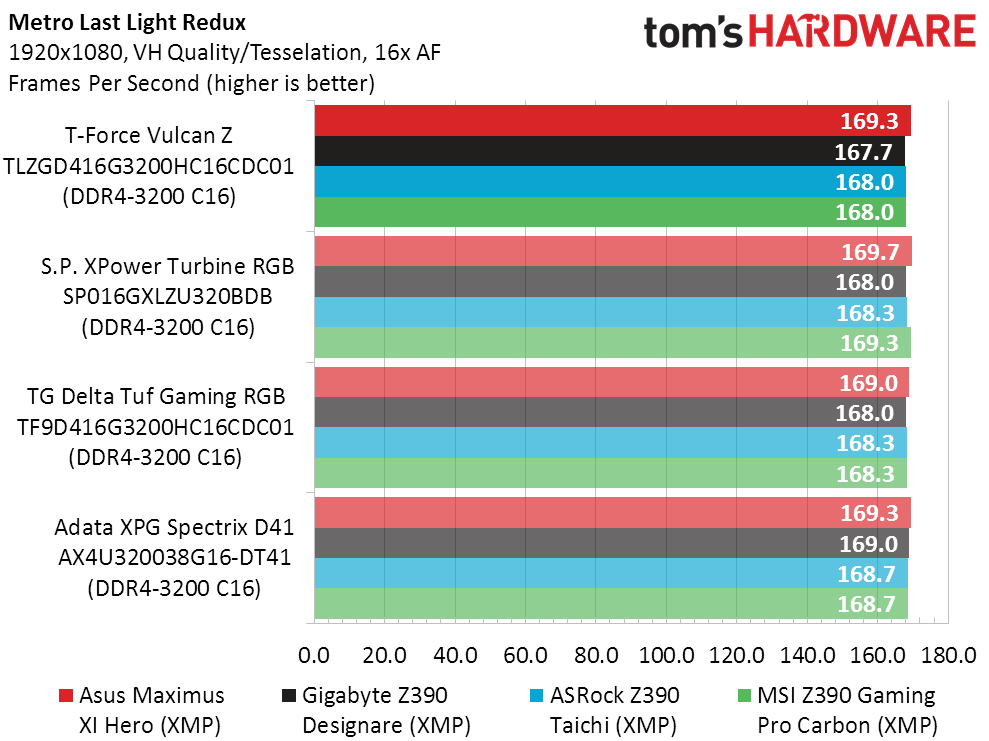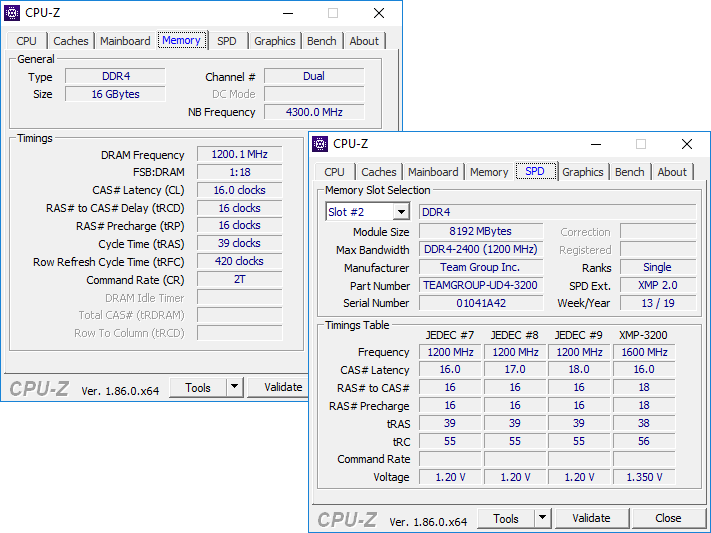Tom's Hardware Verdict
Team Group’s RGB-free Vulcan Z DDR4-3200 C16 gets the performance-to-price ratio needed to win us over for value, but its full performance is only available when installed on an Asus motherboard.
Pros
- +
Good price
- +
Good performance on Asus motherboards
- +
Spectacular overclocking capability
- +
Good timing optimization capability at lower data rates
Cons
- -
Needs an Asus motherboard to perform well.
Why you can trust Tom's Hardware
July 23 2019 Update: Armed with some additional information from MSI about how Asus boards achieve better results with this kit, we ran some additional tests below.
Regardless of the superlatives Team Group (aka Teamgroup) uses to describe itself, its presentation of performance and features at reasonable prices has sent a strong value message to the enthusiast market. Today’s 16GB Vulcan Z DDR4-3200 CAS 16 dual-channel kit continues that trend with an $80 web price, which the firm achieves by eliminating the RGB LEDs found on some of its higher-priced models.
The primary timing set for this kit (part-number TLZGD416G3200HC16CDC01) is isn’t great at 16-18-18. Latency is measured in clock cycles, with lower numbers indicating quicker response, and we think of latency-optimized memory as having timings less than or equal to one cycle for every 200 MHz data rate. While the second and third primary timing (tRCD and tRP) are a bit worse than the 16-cycle maximum we’d like to see at DDR4-3200, both are less impactful on performance compared to the first number. Moreover, 16-18-18 timings are used on most DDR4-3200 kits that compete for the same market segment.
You’ll need a motherboard and processor that supports both XMP and the DDR4-3200 data rate to get this kit to perform as intended, which primarily limits the kit’s target platform to Intel Z-series boards using K-series Core i5 and Core i7 processors. There are certainly several AMD Ryzen processors and compatible motherboards that can also run DDR4-3200 at 16-18-18 timings, but the lack of universal compatibility requires that each AMD CPU/motherboard combination be independently tested and verified with every single XMP kit.
Due to the ever-changing memory landscape, the compatibility lists produced by motherboard vendors is never comprehensive. Many of our forum members are competent to make stability-aiding adjustments suggestions. But inexperienced AMD system builders who aren’t ready to settle for the kit’s DDR4-2400 C16 basic (non-XMP) mode could be in for a long conversation rather than the easy plug-and-play performance they might expect.
Comparison Hardware
Our recent focus on 32GB kits has left us with only a few recent 16GB kits to compare, and all of those have RGB. We were fortunate to find that Silicon Power’s recently-tested XPower Turbine RGB has the same DDR4-3200 C16 configuration and that the extra cost for its RGB lighting was a mere $15. Digging back a little farther we found a second TeamGroup kit, but had to go all the way back to the end of last summer to find our fourth contender.
Asus’ Maximus XI Hero hosts Intel’s Core i9-9900K processor at a fixed 4.80GHz frequency, using Fractal Design’s Celsius S24 to keep it cool. Toshiba’s OCZ RD400 NVMe SSD and MSI’s GTX 1080 Armor OC reduce bottlenecks in other areas.
Get Tom's Hardware's best news and in-depth reviews, straight to your inbox.
Overclocking & Latency Reduction
Vulcan Z is the first DDR4-3200 kit we’ve tested to reach DDR4-4000 on this test platform, though that number was reached more easily on our previous Z370 system. It got there using 19-21-21-42 timings, and loosening the first number to 21 cycles did not allow it to clock any higher.
| Lowest Stable Timings at 1.35V (Max) on ROG Maximus XI Hero (BIOS 0805) | ||||
| DDR4-4000 | DDR4-3466 | DDR4-2933 | DDR4-2400 | |
| T-Force Vulcan ZTLZGD416G3200HC16CDC01(2x 16GB dual-rank) | ✗ | 16-18-18-36 (2T) | 13-15-15-30 (1T) | 11-12-12-28 (1T) |
| S.P. XPower Turbine RGBSP016GXLZU320BDB(2x 16GB dual-rank) | ✗ | 17-18-18-36 (2T) | 14-16-16-32 (1T) | 11-13-13-28 (1T) |
| TG Delta Tuf Gaming RGBTF9D416G3200HC16CDC01(2x 16GB single-rank) | ✗ | 16-18-18-36 (2T) | 14-15-15-30 (1T) | 11-12-12-28 (1T) |
| Adata XPG Spectrix D41AX4U320038G16-DT41(2x 16GB single-rank) | ✗ | 16-18-18-36 (2T) | 14-16-16-32 (1T) | 11-13-13-28 (1T) |
Though it reached DDR4-3466 at the same 16-18-18-36 timings as two of its competitors, Vulcan Z won the latency race at DDR4-2933 by supporting CAS 13.
Benchmark Results
All four kits produce similar bandwidth in respect to our four tested data rates, though the Vulcan Z’s lower latency capability at DDR4-2933 helps it stand out in just one of the four Sandra Latency measurements.


F1 2015 is a great game for testing memory performance, but the Vulcan Z falls to third place when comparing all four kits at XMP settings. Then again, the difference is too small to see within the game. Furthermore, it produced the highest frames-per-second when tested at DDR4-3466.




None of the kits stood out in our 7-Zip test, where less compression time indicates more performance. That should help the Vulcan Z’s low price stand out in our price-to-performance chart.
The average price for these four kits was $92, making the Vulcan kit $12 cheaper and giving it a 15% value advantage over the competing, los-cost RGB DDR4-3200 with similar timings.
But Is it Right For My Motherboard?
Way back in the Z370 days, we noticed a problem with every Team Group DDR4 kit we tested underperforming similarly-spec’d competitors. But it wasn’t until we switched to Z390 that we narrowed down the issue: Team Group DDR4 only performs well on Asus boards, and our previous test system used MSI. Additional testing proved that the performance deficit was not limited to MSI, but that additional testing was performed using a Core i7-8900K. Today we’re updating our tests with a Core i7-9900K and, just for curiosity’s sake, adding the recently-tested Silicon Power kit.






Nothing appears amiss in Sandra, but a quick look at F1 2015 reveals the issue: The Adata kit performs well on all boards, but the T-Force kit performs will only on Asus motherboards. The same is true in 7-Zip, and Silicon Power’s kit appears to have the same problem (to a lesser extent).
Don’t get us wrong, this isn’t a sneaky promo for Adata: It’s simply being used as a proxy for most major brands. Because, of those brands, Adata sent the most-recent 16GB DDR4-3200 C16 comparison kit. Kingston’s similar lack of motherboard preference has shown across our entire Z390 Motherboard Series, and the same was true for G.Skill when we were reviewing Z370 motherboards. If we focus only on DDR4-3200 C16, we found that G.Skill’s version had no deficit on an MSI motherboard, and that Patriot’s version had no performance deficit on a Gigabyte board.
Of all the high-volume enthusiast brands (Silicon Power isn’t there yet), Team Group stands out as being the one that relies upon Asus to reach competitive performance levels, and that’s why we can only recommend this kit to Asus motherboard owners.
July 23 2019 Update:
Some employees at MSI dug around in the Vulcan Z's XMP table, along with its own firmware and that of the Asus motherboard, to determine the cause of Team Group's poor performance on non-Asus boards. They found that the Asus board was optimizing tFAW (Four Activate Window, a setting which controls when four activities are are allowed to run on the same rank) to be lower than specified by the modules, and turned this information over to us as an FYI. Not able to leave well-enough alone, we first confirmed the firmware setting difference, and then retested this kit using Asus' tFAW on both the MSI and Gigabyte motherboards.


We shoved the comparison modules between the two variations of the T-Force Vulcan-Z tests. Focusing on the blue bars, we see that the MSI motherboard picked up three percent in Sandra when using the Asus board's tFAW. Meanwhile, comparing the black bars shows negligible difference on the Gigabyte board.





The real fun starts in F1 2015, where the MSI board's Vulcan-Z results jump from 115.5 to 137.9 FPS. That type of performance leap repeats in 7-Zip, where the time to compress a file dropped by nearly 1.5 minutes. Gigabyte again sees far smaller gains from the lower tFAW.
MSI states that it will not be deviating from the memory's programmed tFAW because doing so can cause black screens at boot. The fact that other brands of memory perform well across all boards again points back to the memory brand, rather than the motherboard maker, as the bearer of this burden. Given that this doesn't effectively change performance of this kit across all board makers, we're sticking with our previous score.
Photo Credits: Tom's Hardware
MORE: Best Memory
MORE: DDR DRAM FAQs And Troubleshooting Guide
MORE: All Memory Content









